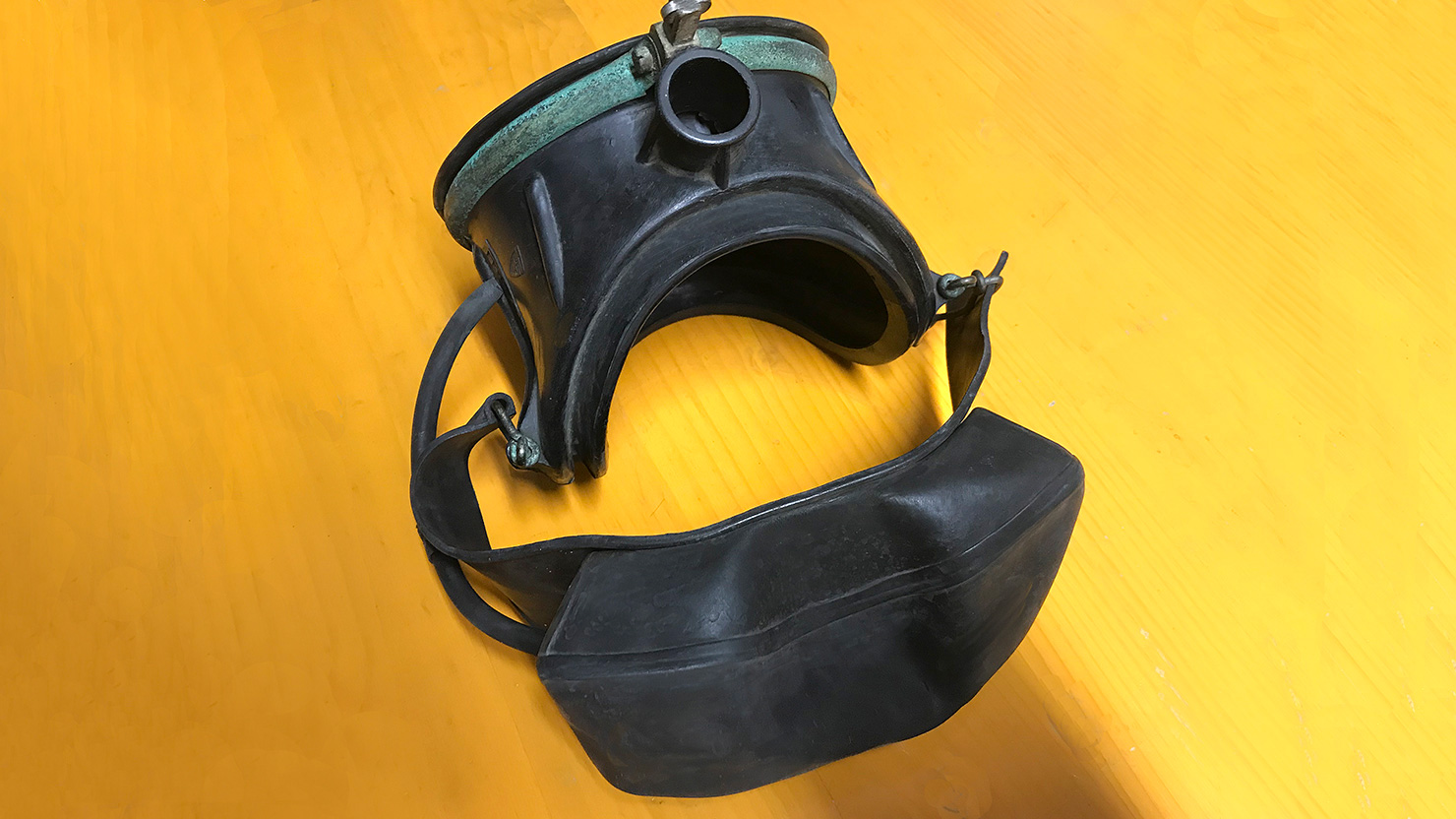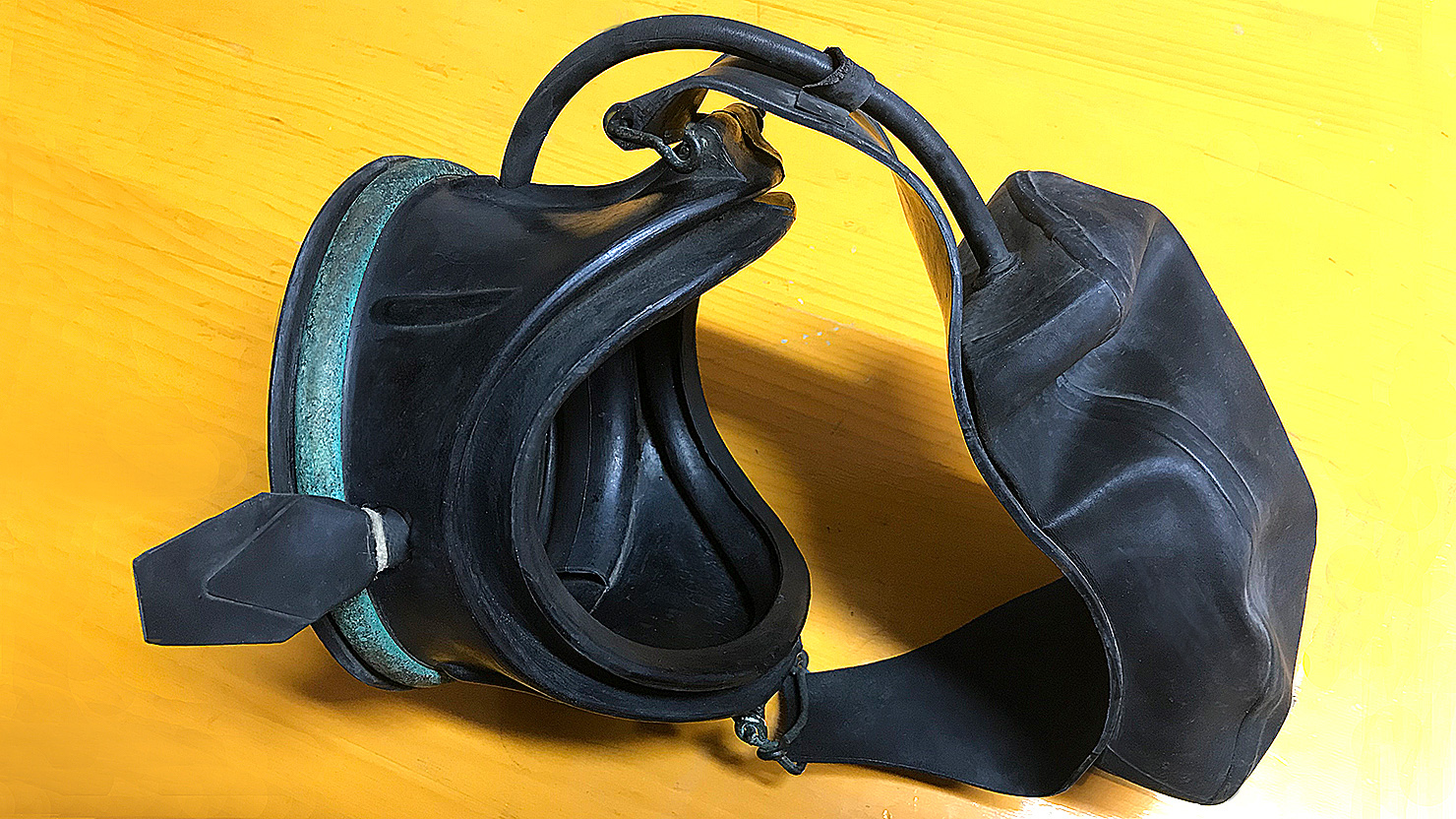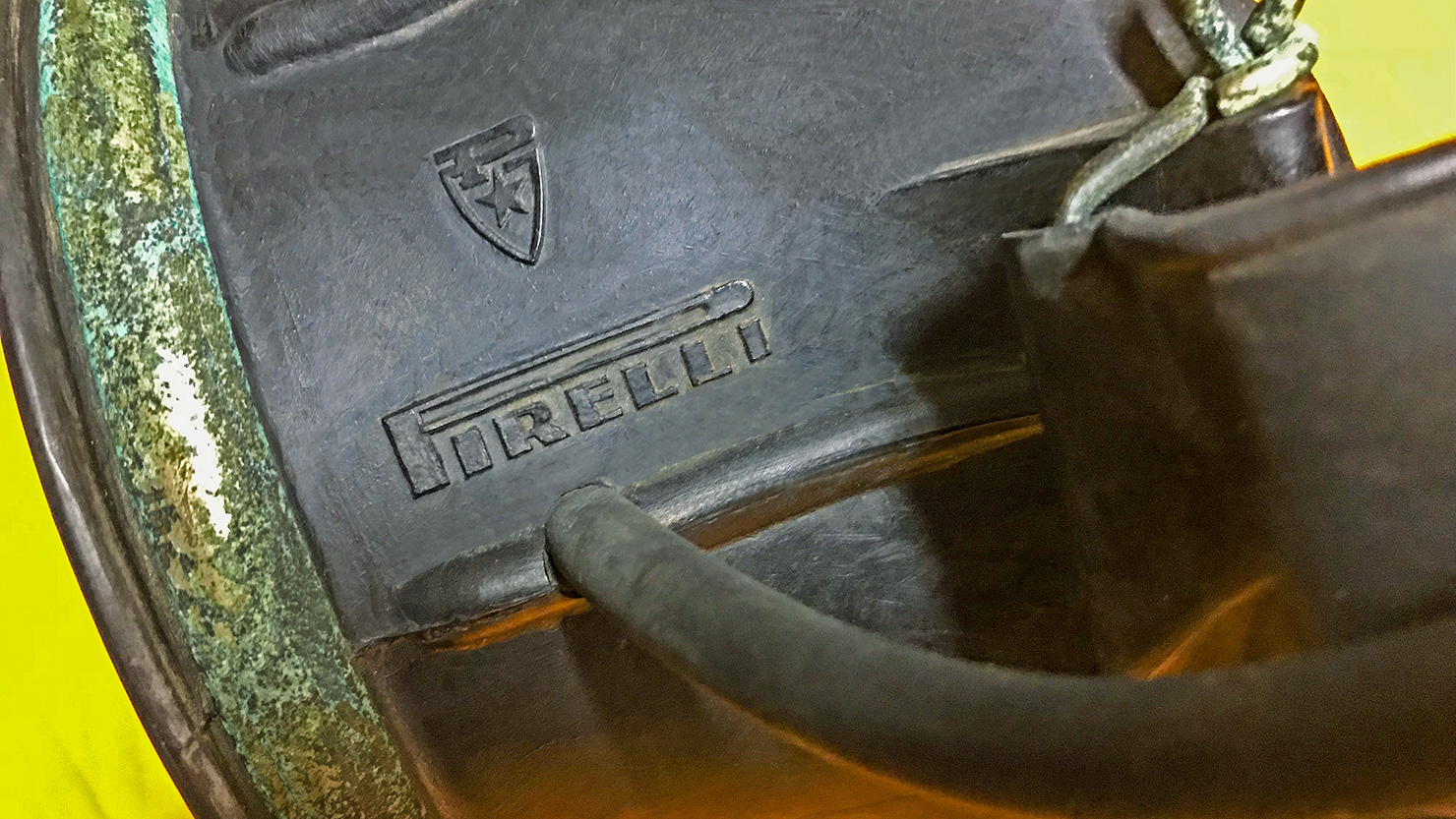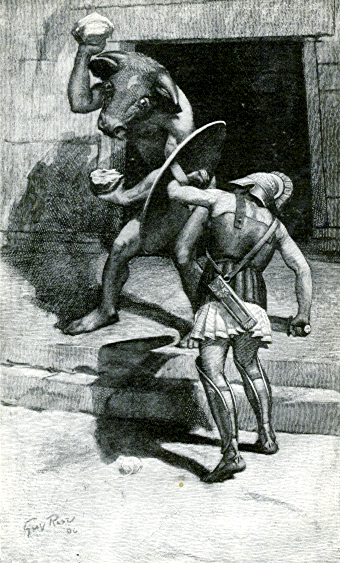David Wilson
Contributor
Second early Nemrod mask of the day is the Ceilan, which is Spanish for "Ceylon", the country now known as the Southern Asian island nation of Sri Lanka. Here is an image of the Ceilan from the wonderful Nemrod Museum on Facebook:
 Here is a translated comment by the owner about this mask: "Model CEILAN (195?-1963). This is one of the very rare specimens still preserved of the masks Nemrod made in red rubber. As has been mentioned on other occasions, colours added to rubber caused a fairly rapid degradation of it and so it is very difficult to find today masks, fins or regulators with coloured rubber from the 40s-50s-60 s in an acceptable conservation status, especially when it comes to red rubber. The Ceylon mask in the photo is a simple model, small size and not a nose clamping model. Metallic hoop is made on a side of the mask instead of the upper or lower central area as in the other models. The front is not glass but plastic, a feature shared with other economic models of the brand".
Here is a translated comment by the owner about this mask: "Model CEILAN (195?-1963). This is one of the very rare specimens still preserved of the masks Nemrod made in red rubber. As has been mentioned on other occasions, colours added to rubber caused a fairly rapid degradation of it and so it is very difficult to find today masks, fins or regulators with coloured rubber from the 40s-50s-60 s in an acceptable conservation status, especially when it comes to red rubber. The Ceylon mask in the photo is a simple model, small size and not a nose clamping model. Metallic hoop is made on a side of the mask instead of the upper or lower central area as in the other models. The front is not glass but plastic, a feature shared with other economic models of the brand".
Here are catalogue entries for the model un chronological order. First 1956:
 Spanish: "Lentes CEILAN. 158 Pts. Con cristal amarillo irrompible que actúa de filtro".
Spanish: "Lentes CEILAN. 158 Pts. Con cristal amarillo irrompible que actúa de filtro".
Rough translation: "CEILAN mask. 158 Pesetas. With shatterproof yellow lens serving as a filter".
1960
 1961
1961
 Spanish: "PS/2068. - CEILÓN. - Tipo universal económico. Su forma y reborde se adhiere a todas las caras con cierre absoluto. Va provista de aro metálico de seguridad y cristal muy nitido de forma ovalada".
Spanish: "PS/2068. - CEILÓN. - Tipo universal económico. Su forma y reborde se adhiere a todas las caras con cierre absoluto. Va provista de aro metálico de seguridad y cristal muy nitido de forma ovalada".
Rough translation: "PS/2068. - CEILÓN. - Budget universal type. Its shape and border adheres to all faces absolutely leaktight. It is provided with a metallic security rim and very clear oval-shaped lens.
1962
 Note the spelling change from "Ceilan" to "Ceilón". As for the idea of red as a mask colour, I am reminded of a Soviet mask called the "Amfibia":
Note the spelling change from "Ceilan" to "Ceilón". As for the idea of red as a mask colour, I am reminded of a Soviet mask called the "Amfibia":
 The skirt of this mask was reportedly made from a blend of plastic and rubber, which may have conserved the mask's redness more than pure rubber would have done.
The skirt of this mask was reportedly made from a blend of plastic and rubber, which may have conserved the mask's redness more than pure rubber would have done.
Enough for today. I'll be back at the weekend with more early Nemrod dive masks. Until then, keep safe and stay well.
Here are catalogue entries for the model un chronological order. First 1956:
Rough translation: "CEILAN mask. 158 Pesetas. With shatterproof yellow lens serving as a filter".
1960
Rough translation: "PS/2068. - CEILÓN. - Budget universal type. Its shape and border adheres to all faces absolutely leaktight. It is provided with a metallic security rim and very clear oval-shaped lens.
1962
Enough for today. I'll be back at the weekend with more early Nemrod dive masks. Until then, keep safe and stay well.










